Search Result
Results for "
cell killing
" in MedChemExpress (MCE) Product Catalog:
3
Biochemical Assay Reagents
| Cat. No. |
Product Name |
Target |
Research Areas |
Chemical Structure |
-
- HY-148026
-
|
BGB 11417
|
Bcl-2 Family
|
Cancer
|
|
Sonrotoclax is a potent, orally active Bcl2 inhibitor. Sonrotoclax has effective cell killing effect against a variety of lymphoma and leukemia cell lines .
|
-
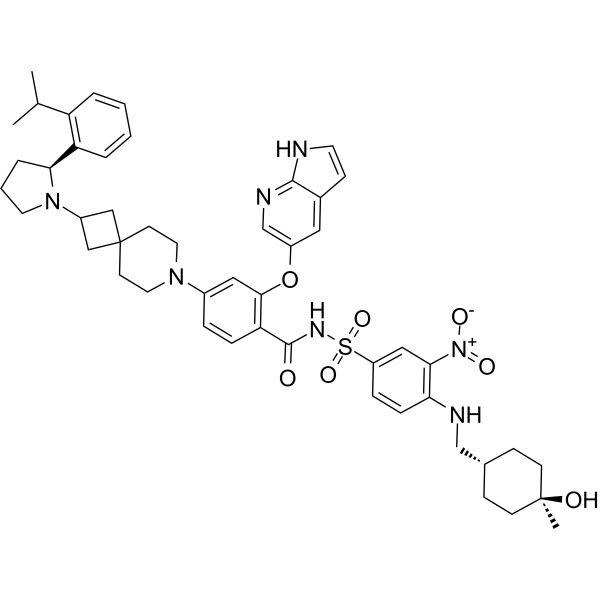
-
- HY-14989
-
SQ109
3 Publications Verification
NSC 722041
|
Parasite
Bacterial
Antibiotic
|
Infection
|
|
SQ109 is a potent inhibitor of the trypomastigote form of the parasite, with IC50 for cell killing of 50±8 nM.
SQ109, targets MmpL3, is an antitubercular agent.
|
-

-
- HY-162472
-
|
|
ATM/ATR
DNA-PK
|
Cancer
|
|
XRD-0394 is a potent and specific dual inhibitor of ATM and DNA-PKcs with oral activity. XRD-0394 significantly enhances tumor cell killing in vitro and in vivo under therapeutic ionizing radiation conditions. In addition, XRD-0394 can potentiate the effects of PARP and topoisomerase I inhibitors in vitro .
|
-
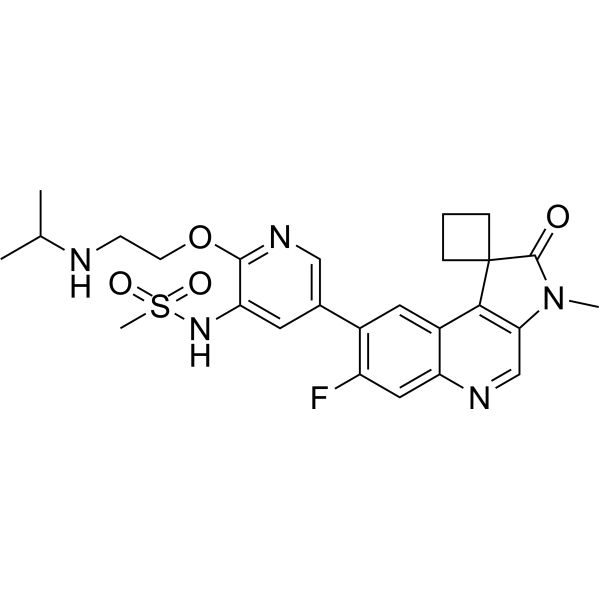
-
- HY-157975
-
|
|
Glutaminase
|
Cancer
|
|
LM11 is an inhibitor of transglutaminase 2 (TG2) with an activity of killing glioblastoma cells by maintaining TG2 in a cytotoxic conformational state .
|
-
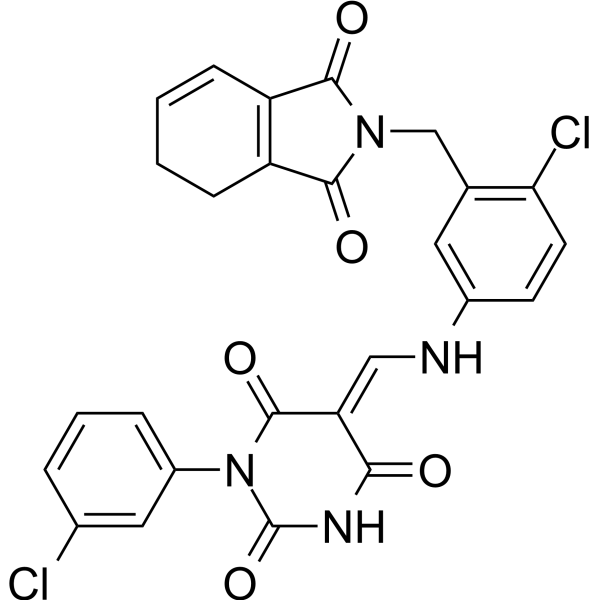
-
- HY-157503
-
|
|
Others
|
Cancer
|
|
Photosensitizer-3 is a photosensitizer that exhibits powerful selective killing effects on transfected HEK cells and affibody-targeted A431 cancer cells when exposed to near-infrared light excitation .
|
-
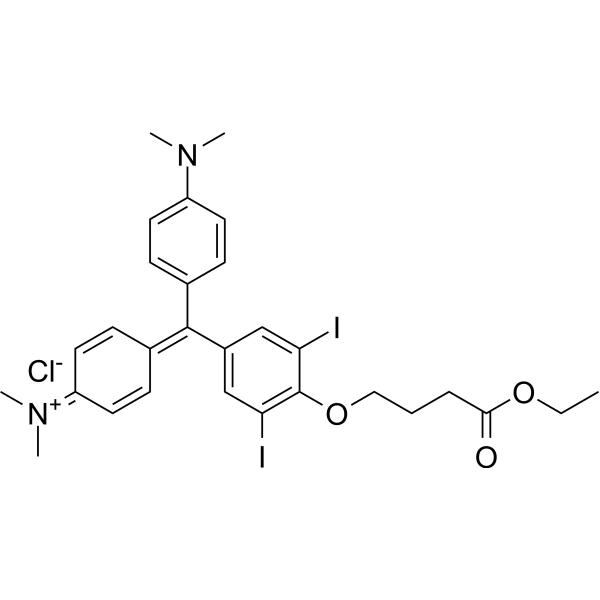
-
- HY-N11662
-
|
|
Others
|
Cancer
|
|
Euphoheliosnoid A (Compound 24) is a diterpenoid that can significantly enhance the killing activity of natural killer (NK) cells towards H1299-luci cells and A549-luci cells at the concentration of 2.5 μM .
|
-
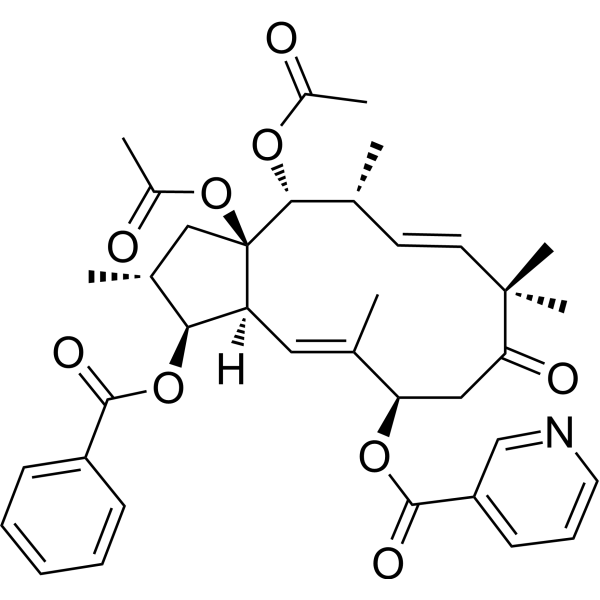
-
- HY-N8739
-
|
|
Endogenous Metabolite
|
Cancer
|
|
2-Hydroxyxanthone (Compound 3) is an isoprene flavone derived from Calophyllum inophyllum. 2-Hydroxyxanthone has an obvious killing effect on K562 cells .
|
-
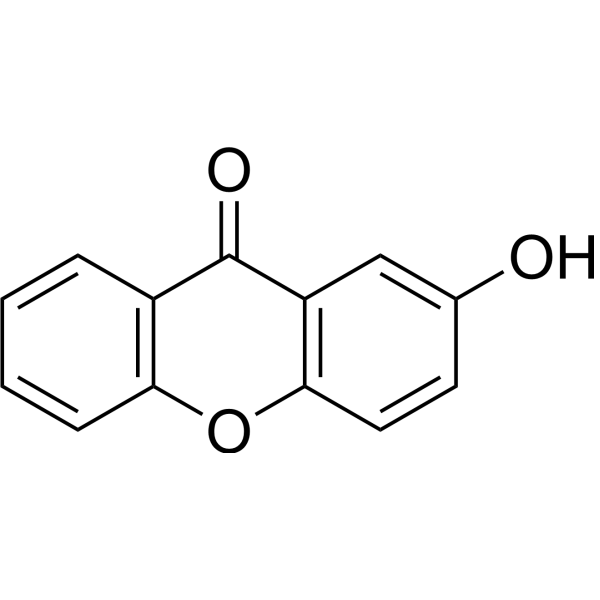
-
- HY-14942A
-
|
RTA 744; WP 744; WP 769 hydrochloride
|
Apoptosis
|
Cancer
|
|
Berubicin hydrochloride (RTA 744) is a Doxorubicin (HY-15142A) analogue. Berubicin hydrochloride triggers apoptosis and cell killing in NB cells by activating proapoptotic mediators. Berubicin hydrochloride has proapoptotic and anti-leukemia activities. Berubicin hydrochloride can be used for cancer research .
|
-
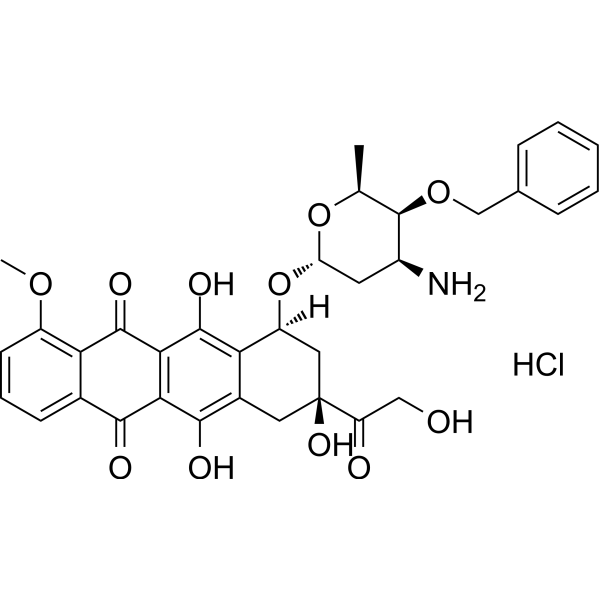
-
- HY-138794
-
|
|
Deubiquitinase
|
Cancer
|
|
XL177A is a highly potent and selective irreversible USP7 inhibitor with an IC50 of 0.34 nM. XL177A elicits cancer cell killing through a p53-dependent mechanism .
|
-
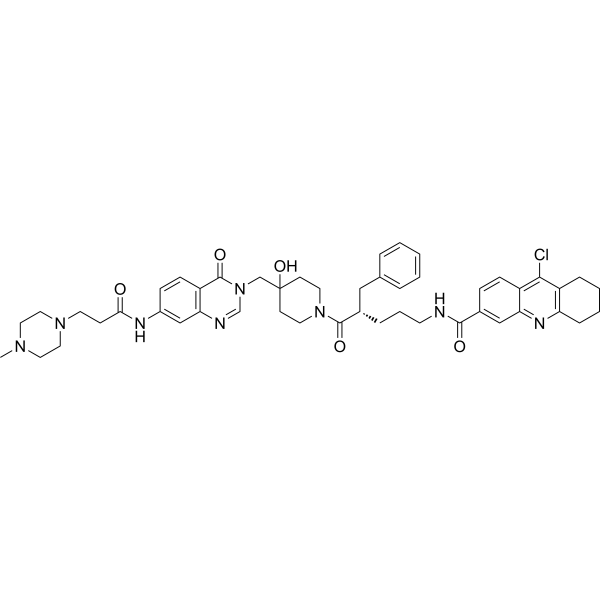
-
- HY-P99011
-
|
|
CD3
|
Cancer
|
|
Cibisatamab (CEA-TCB), a T cell bispecific antibody, binds Carcino-Embryonic Antigen (CEA) on cancer cells and CD3 on T cells. Cibisatamab (CEA-TCB) triggers T cell killing of cancer cell lines expressing moderate to high levels of CEA at the cell surface. Cibisatamab (CEA-TCB) can be used for colorectal cancer research .
|
-

-
- HY-P99521
-
|
XmAb14045
|
CD3
|
Cancer
|
|
Vibecotamab (XmAb14045) is a potent bispecific antibody against CD123 and CD3 that stimulates T cell-mediated targeted killing of CD123-expressing cells. Vibecotamab has antitumor activity and can be used in acute myeloid leukaemia studies .
|
-

-
- HY-P99601
-
|
BFCR 4350A; RG 6160; RO 7187797
|
CD3
|
Neurological Disease
Cancer
|
|
Cevostamab (BFCR4350A; RG6160; RO7187797) is a humanized IgG1-based BsAb that targets membrane-proximal extracellular domain of FcRH5 on multiple myeloma (MM) cells as well as CD3 on T cells. Moreover, Cevostamab facilitates efficient synapse formation, improves killing activity of T cells against MM tumor cells .
|
-

-
- HY-P99024
-
|
RO7082859
|
CD20
|
Cancer
|
|
Glofitamab (RO7082859) is a T-cell-engaging bispecific antibody possessing a novel 2:1 structure with bivalency for CD20 on B cells and monovalency for CD3 on T cells. Glofitamab leads to T-cell activation, proliferation, and tumor cell killing upon binding to CD20 on malignant cells. Glofitamab induces durable complete remissions in relapsed or refractory B-Cell lymphoma .
|
-
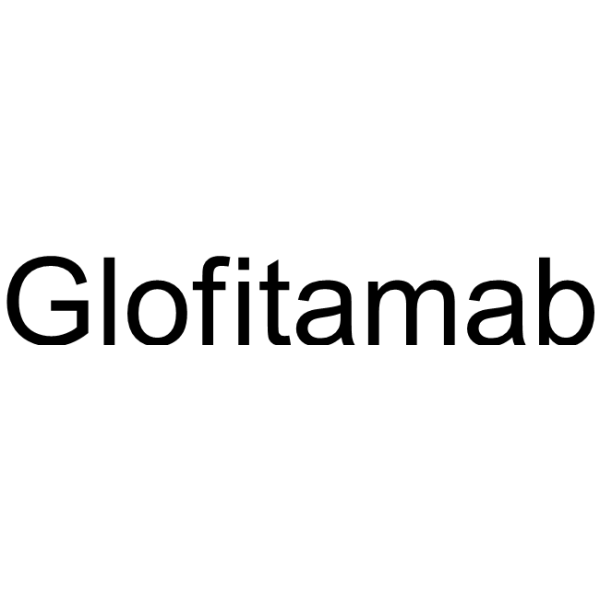
-
- HY-N2492
-
|
Methyl trans-p-coumarate
|
Bacterial
Apoptosis
|
Infection
Cancer
|
|
(E)-Methyl 4-coumarate (Methyl 4-hydroxycinnamate), found in several plants, such as Allium cepa or Morinda citrifolia L. leaves. (E)-Methyl 4-coumarate cooperates with Carnosic Acid in inducing apoptosis and killing acute myeloid leukemia cells, but not normal peripheral blood mononuclear cells. Antioxidant and antimicrobial activity.
|
-
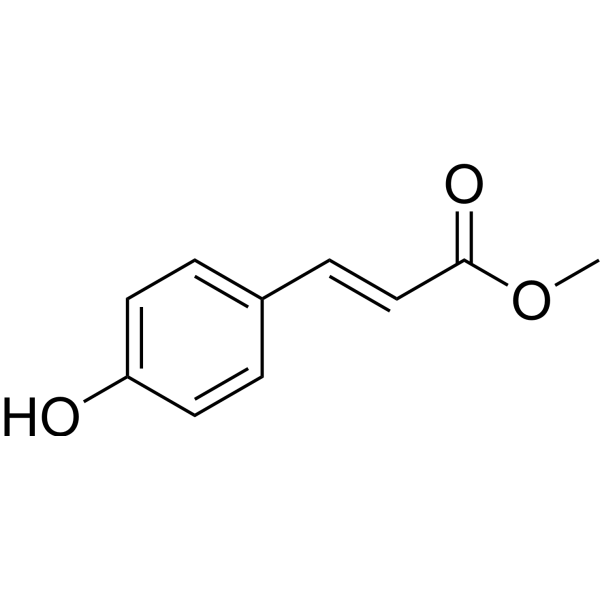
-
- HY-138936
-
SSK1
1 Publications Verification
|
p38 MAPK
Apoptosis
|
Inflammation/Immunology
|
|
SSK1, a senescence-specific killing compound, is a β-galactosidase-targeted proagent attenuates inflammation. SSK1 is activated by lysosomal β-galactosidase and selectively killed senescent cells through the activation of p38 MAPK and induction of apoptosis .
|
-
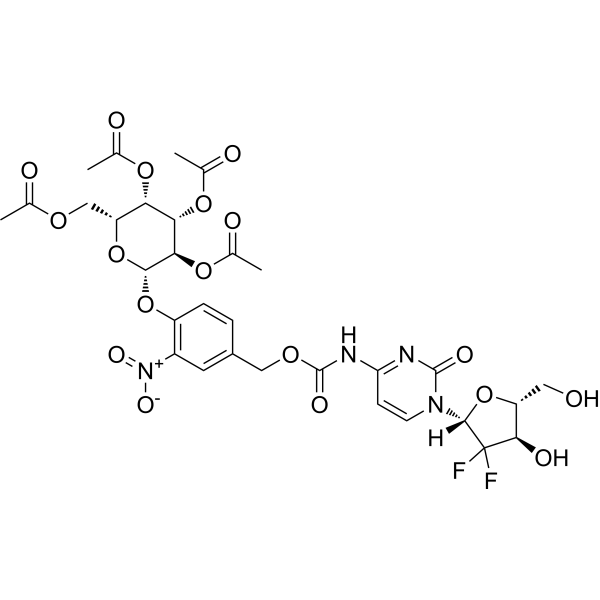
-
- HY-15045
-
|
|
PARP
|
Cancer
|
|
INO-1001 is a potent and selective poly (ADP-ribose) polymerase (PARP) inhibitor. INO-1001 is a potent enhancer of radiation sensitivity and enhances radiation-induced cell killing by interfering with DNA repair mechanisms, resulting in necrotic cell death . INO-1001 has anti-tumor effects .
|
-

-
- HY-134582
-
dCBP-1
1 Publications Verification
|
PROTACs
Epigenetic Reader Domain
|
Cancer
|
|
dCBP-1 is a potent and selective heterobifunctional degrader of p300/CBP based on Cereblon ligand. dCBP-1 is exceptionally potent at killing multiple myeloma cells and ablates oncogenic enhancer activity driving MYC expression .
|
-
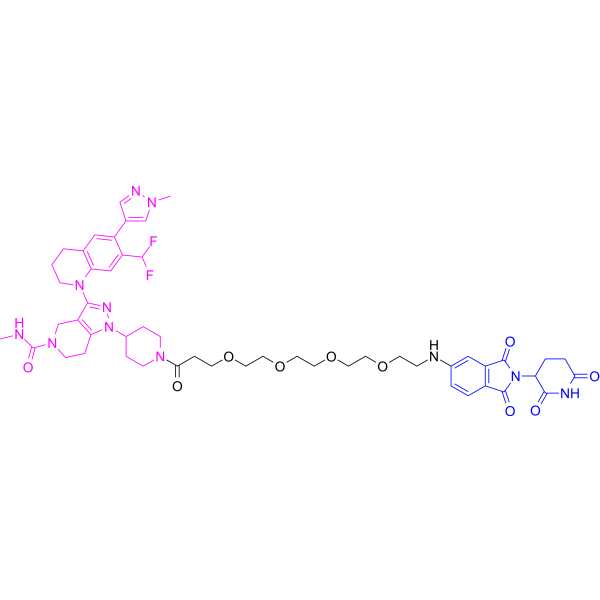
-
- HY-P99394
-
|
JNJ-64407564
|
CD3
|
Cancer
|
|
Talquetamab (JNJ-64407564) is a humanized bispecific antibody that binds to GPRC5D (member of G protein-coupled receptor family C5 group D) and CD3 to induce T cell-mediated killing of GPRC5D-expressing MM cells through T cell recruitment and activation. Talquetamab (JNJ-64407564) has antitumor activity .
|
-

-
- HY-117422
-
|
11-Oxo-prosta-5Z,12E,14Z-trien-1-oic acid
|
PPAR
|
Cancer
|
|
CAY10410 (11-Oxo-prosta-5Z), a 15d-PGJ2 analog, is a potent PPARγ agonist. CAY10410 has the ability to activate PPARγ in human B cells without killing B lymphocytes .
|
-

-
- HY-P99622
-
|
IMC-20D7S
|
Tyrosinase
|
Cancer
|
|
Flanvotumab (IMC-20D7S) is a human monoclonal antibody targeting to tyrosinase-related protein (TYRP1), specifically expressed in melanocytes and melanoma cells. Flanvotumab acts function via natural killing-mediated antibody-dependent cell-mediated cytotoxicity (ADCC). Flanvotumab has potent anti-tumor activity and good tolerance .
|
-
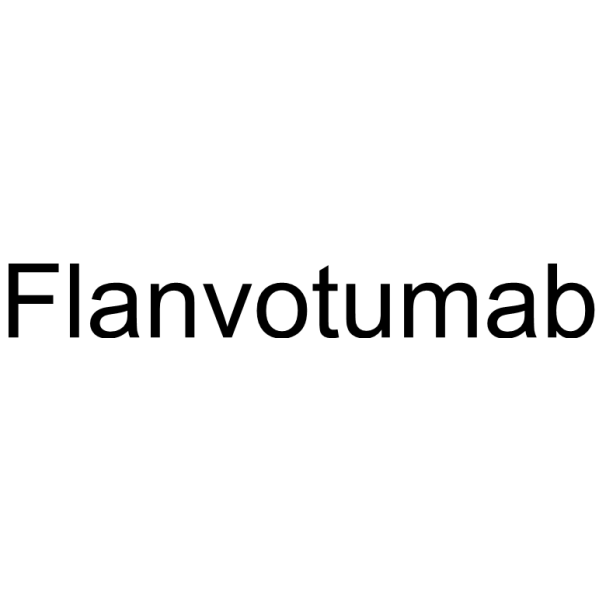
-
- HY-149213
-
|
|
Histone Demethylase
PD-1/PD-L1
|
Cancer
|
|
LSD1-IN-24(compound 3S) is a selective LSD1 inhibitor with IC50 = 0.247 μM. LSD1-IN-24 can mediate the expression of PD-L1, enhance T cell killing response, and can be used in cancer research .
|
-
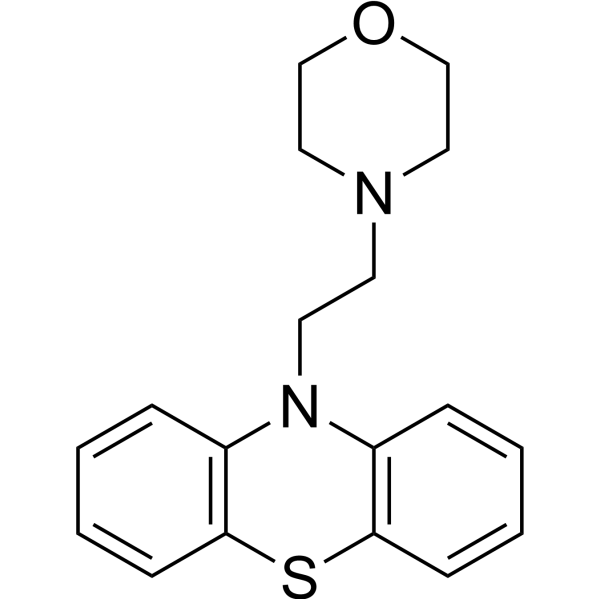
-
- HY-145290
-
|
|
Topoisomerase
Apoptosis
|
Cancer
|
|
CPT-Se3, a selenoproagent of Camptothecin (CPT), shows improved potency in killing cancer cells and inhibiting tumor growth. CPT–Se3 decreases the GSH/GSSG ratio and total thiols, elevates the ROS level in Hep G2 cells, and eventually induces apoptosis of cancer cells. CPT-Se3 shows cytotoxicity against HeLa, Hep G2, A549, and SMMC-7721 cells (IC50= 2.19-4.7 μM) .
|
-
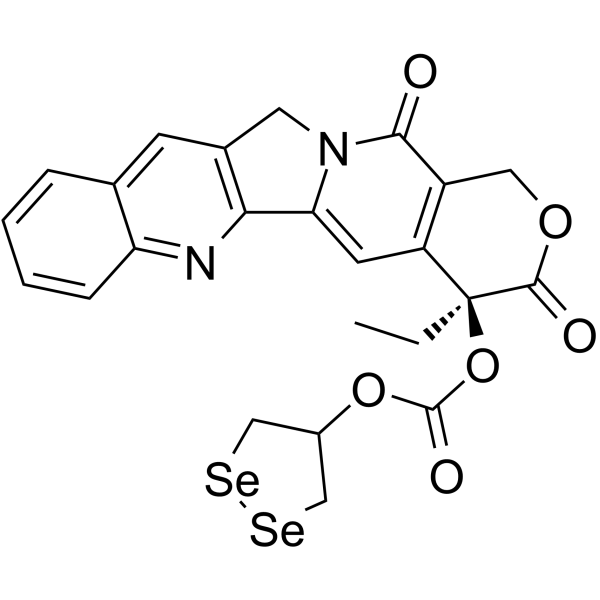
-
- HY-145291
-
|
|
Topoisomerase
Apoptosis
|
Cancer
|
|
CPT-Se4, a selenoproagent of Camptothecin (CPT), shows improved potency in killing cancer cells and inhibiting tumor growth. CPT-Se4 decreases the GSH/GSSG ratio and total thiols, elevates the ROS level in Hep G2 cells, and eventually induces apoptosis of cancer cells. CPT-Se4 shows cytotoxicity against HeLa, Hep G2, A549, and SMMC-7721 cells (IC50= 2.54-6.4 μM) .
|
-
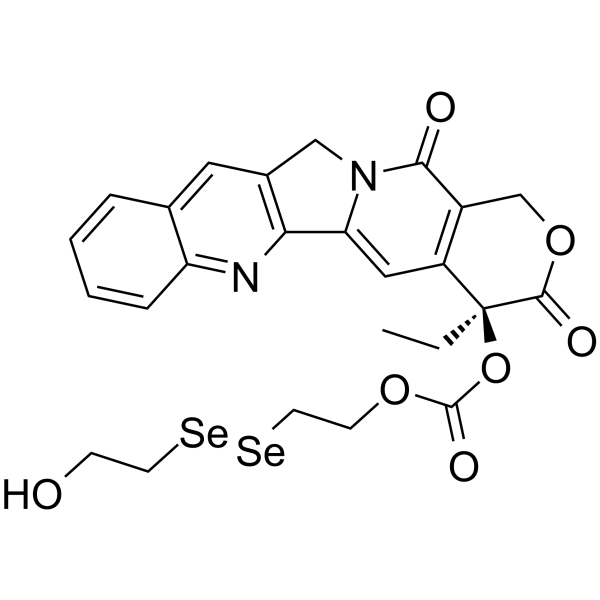
-
- HY-B0608
-
|
|
Bacterial
Antibiotic
Apoptosis
Necroptosis
|
Infection
Cancer
|
|
Chlorhexidine digluconate is a chlorophenyl biguanide with broad antibacterial action against both Gram (+) and (-) bacteria and fungi. Chlorhexidine digluconate is a broad-spectrum antiseptic and disinfectant. Chlorhexidine digluconate is effective to prevent and control infectious diseases of the mouth by killing bacteria in saliva and tongue. Chlorhexidine digluconate is a cytotoxic agent and induces cell necrosis and apoptosis .
|
-
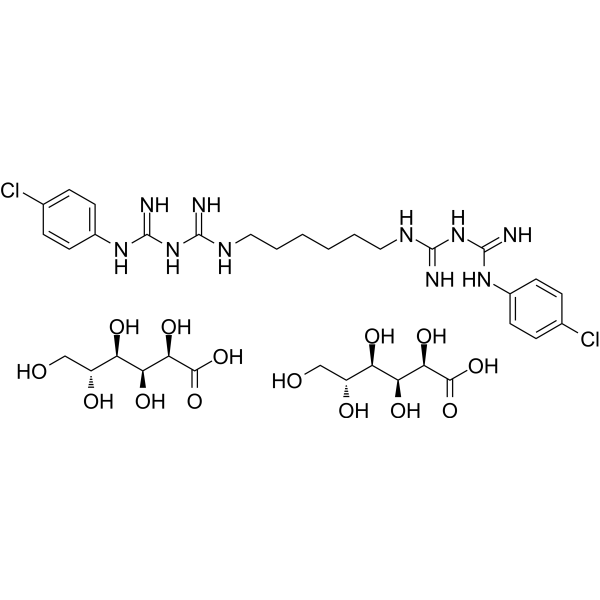
-
- HY-W145657
-
|
Cord Factor
|
Biochemical Assay Reagents
|
Infection
|
|
Trehalose 6,6'-dimycolate (Cord Factor) is trehalose 6,6'-dimycolate, a cell wall glycolipid of Mycobacterium tuberculosis, which can be used to simulate inflammation and granuloma induced by Mycobacterium tuberculosis (MTB) form. Trehalose 6,6′-dimycolate also protects Mycobacterium tuberculosis from macrophage-mediated killing, inhibits efficient antigen presentation, and reduces the development of protective T cell responses .
|
-
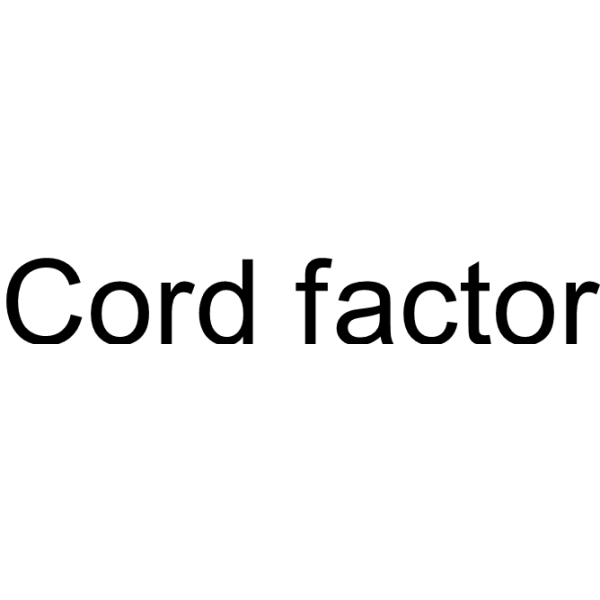
-
- HY-W010342
-
|
|
Others
|
Cancer
|
|
6-Aminonicotinamide, a potent antimetabolite of nicotinamide, is competitive NADP +-dependent enzyme glucose-6-phosphate dehydrogenase (G6PD) inhibitor (Ki=0.46 μM). 6-Aminonicotinamide resultis ATP depletion and synergizes with DNA-crosslinking chemotherapy agents, such as Cisplatin, in killing cancer cells .
|
-

-
- HY-155717
-
|
|
Autophagy
Pim
|
Cancer
|
|
NDBM is a probe and binds to tumor-specific Pim-1 kinase, releases strong fluorescence, and produces cytotoxicity, thus achieving cell screening and killing effects. NDBM can specifically target lysosomes and sensitively respond to pH. NDBM can be used to track the pH changes in the intracellular environment under conditions of autophagy and external stimulation .
|
-

-
- HY-P99833
-
|
CK-301; TG-1501
|
PD-1/PD-L1
|
Cancer
|
|
Cosibelimab (CK-301; TG-1501) is a high-affinity, fully human PD-L1-blocking monoclonal antibody that binds PD-L1 and blocks its interaction with PD-1. Cosibelimab has a functional Fc domain and is capable of inducing ADCC and complement-dependent cytotoxicity (CDC)-mediated killing of PD-L1 + cell lines, including lymphoma cells .
|
-

-
- HY-P9976A
-
|
|
CD38
|
Cancer
|
|
Isatuximab (anti-CD38) is a monoclonal antibody targeting the transmembrane receptor and extracellular enzyme CD38.Isatuximab induces tumor cell killing via fragment crystallizable (Fc)-dependent or Fc-independent mechanisms, including antibody-dependent cellular cytotoxicity (ADCC), antibody-dependent cellular phagocytosis (ADCP), and complement-dependent cytotoxicity (CDC) .
|
-
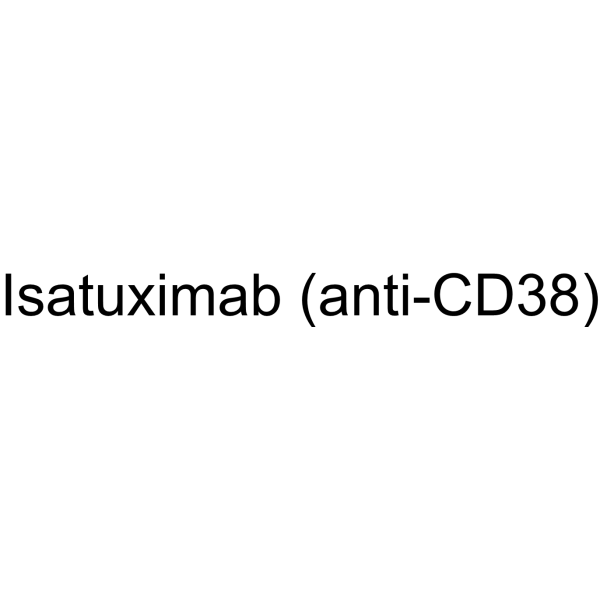
-
- HY-153358
-
|
|
HDAC
|
Cancer
|
|
TNG260 is a CoREST-selective deacetylase (CoreDAC) inhibitor. TNG260 inhibits HDAC1 with 10-fold selectivity over HDAC3. TNG260 leads to HDAC1 inhibition, reverses anti-PD1 resistance driven by loss of STK11. TNG260 decreases intratumoral infiltration of neutrophils. TNG260 exhibits immune-mediated cell killing .
|
-
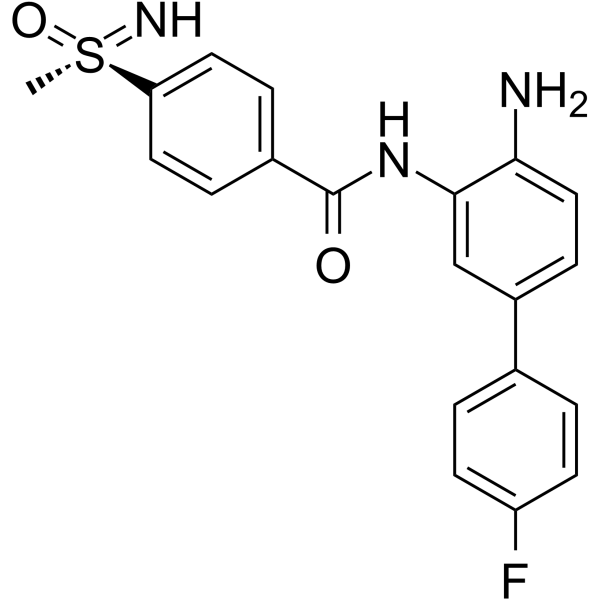
-
- HY-157793
-
|
|
Toll-like Receptor (TLR)
NF-κB
MAPKAPK2 (MK2)
|
Inflammation/Immunology
Cancer
|
|
SMU-L11 is a specific TLR7 agonist (EC50=0.024 μM), which recruits MyD88 adapter protein and activates downstream NF-κB and MAPK signaling pathways. In murine models, SMU-L11 significantly enhances immune cell activation and promotes the proliferation of CD4 + T and CD8 + T cells, thereby directly killing tumor cells and inhibiting tumor growth. SMU-L11 can be used for cancer research, and also has the potential for studying immune system diseases .
|
-

-
- HY-132192
-
|
|
PD-1/PD-L1
|
Cancer
|
|
PD-1/PD-L1-IN-9 is a potent and orally active inhibitor of PD-1/PD-L1 interaction, with an IC50 of 3.8 nM. PD-1/PD-L1-IN-9 can enhance the killing activity of tumor cells by immune cells. PD-1/PD-L1-IN-9 also exhibits significant in vivo antitumor activity in a CT26 mouse model .
|
-
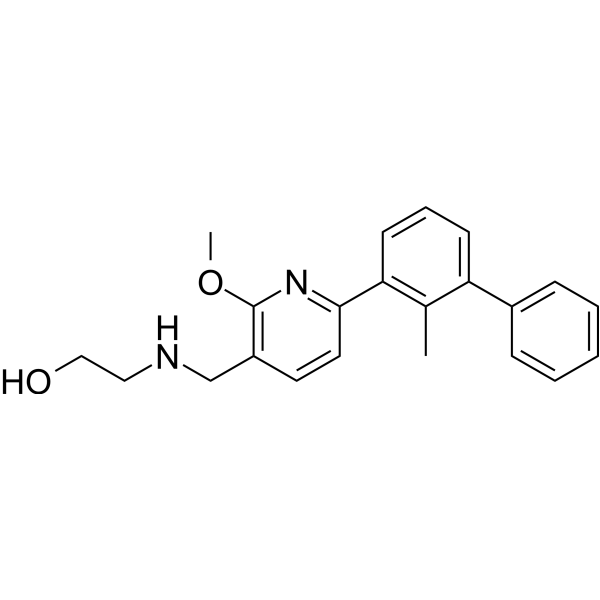
-
- HY-132192A
-
|
|
PD-1/PD-L1
|
Cancer
|
|
PD-1/PD-L1-IN-9 hydrochloride is a potent and orally active inhibitor of PD-1/PD-L1 interaction, with an IC50 of 3.8 nM. PD-1/PD-L1-IN-9 hydrochloride can enhance the killing activity of tumor cells by immune cells. PD-1/PD-L1-IN-9 hydrochloride also exhibits significant in vivo antitumor activity in a CT26 mouse model .
|
-
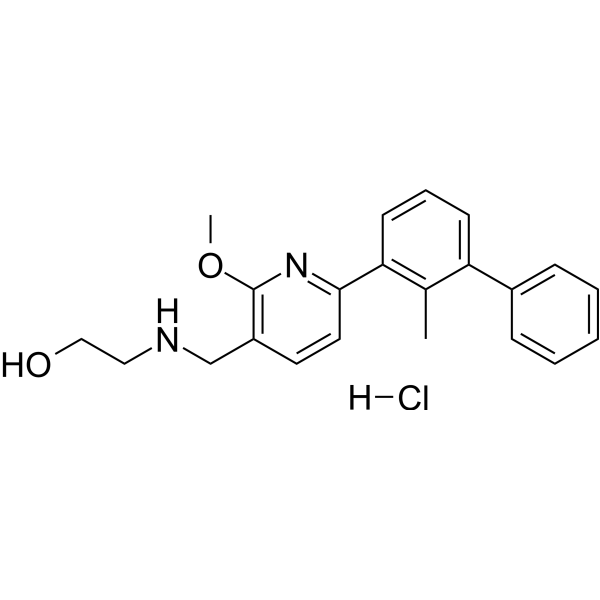
-
- HY-140696C
-
|
mPEG-Hydroxy (MW 20000); Polyethylene glycol monomethyl ether (MW 20000)
|
PROTAC Linkers
|
Cancer
|
|
m-PEG-OH (MW 20000) can be used as a macroinitiator to participate in the synthesis of amphiphilic block copolymers. Nanoscale micelles can be prepared by using amphiphilic block copolymers to deliver active drugs. Paclitaxel (HY-B0015), a hydrophobic anticancer agent encapsulated in micelles, has stronger activity in killing cancer cells than free Paclitaxel. And it preferentially accumulates in tumor tissue with only limited distribution in healthy organs.
|
-
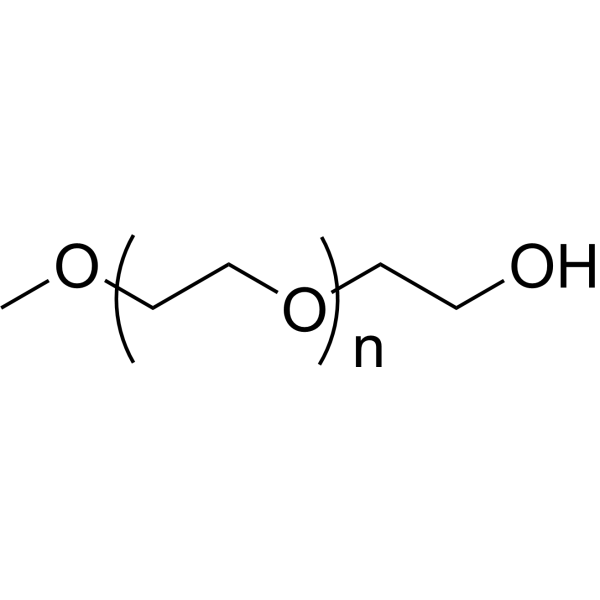
-
- HY-140696D
-
|
mPEG-Hydroxy (MW 10000); Polyethylene glycol monomethyl ether (MW 10000)
|
PROTAC Linkers
|
Cancer
|
|
m-PEG-OH (MW 10000) can be used as a macroinitiator to participate in the synthesis of amphiphilic block copolymers. Amphiphilic block copolymers can be used to prepare nanoscale micelles to deliver active drugs. Paclitaxel (HY-B0015), a hydrophobic anticancer agent encapsulated in micelles, has stronger activity in killing cancer cells than free Paclitaxel. And it preferentially accumulates in tumor tissue with only limited distribution in healthy organs.
|
-
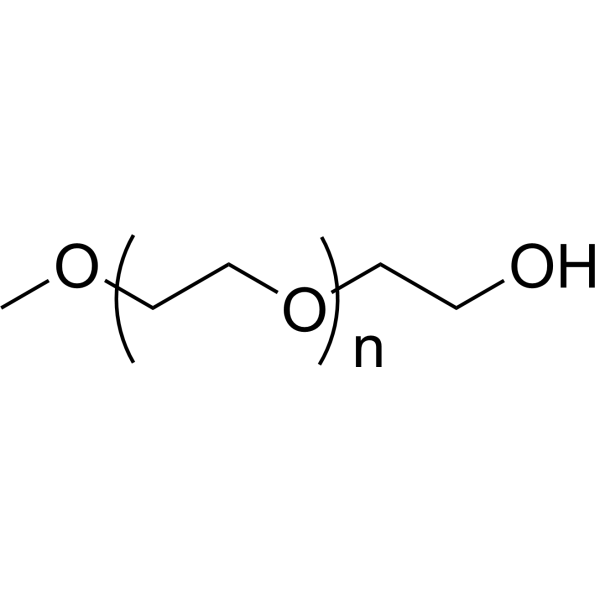
-
- HY-B0608R
-
|
|
Bacterial
Antibiotic
Apoptosis
Necroptosis
|
Infection
Cancer
|
|
Chlorhexidine (digluconate) (Standard) is the analytical standard of Chlorhexidine (digluconate). This product is intended for research and analytical applications. Chlorhexidine digluconate is a chlorophenyl biguanide with broad antibacterial action against both Gram (+) and (-) bacteria and fungi. Chlorhexidine digluconate is a broad-spectrum antiseptic and disinfectant. Chlorhexidine digluconate is effective to prevent and control infectious diseases of the mouth by killing bacteria in saliva and tongue. Chlorhexidine digluconate is a cytotoxic agent and induces cell necrosis and apoptosis .
|
-
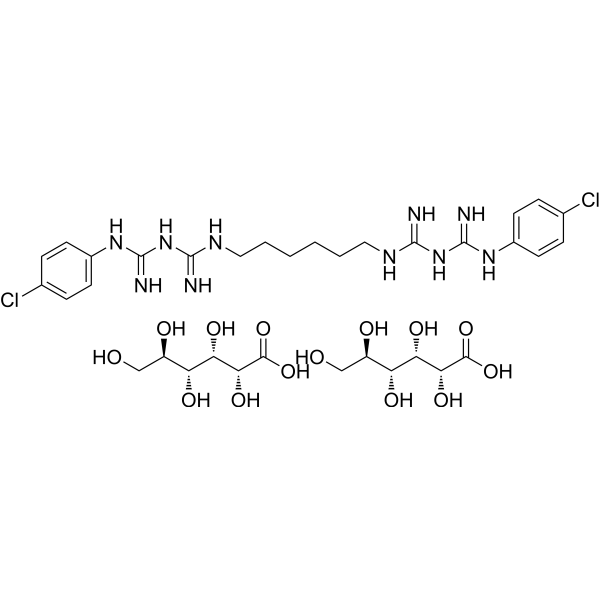
-
- HY-131911
-
|
|
PROTACs
Indoleamine 2,3-Dioxygenase (IDO)
|
Inflammation/Immunology
|
|
PROTAC IDO1 Degrader-1 is the first potent IDO1 (indoleamine 2,3-dioxygenase 1) degrader that hijacks IDO1 to Cereblon E3 ligase to introduce IDO1 into UPS and eventually achieve ubiquitination and degradation (DC50=2.84 μM). PROTAC IDO1 Degrader-1 moderately improves the tumor-killing activity of H ER2 CAR-T cells .
|
-
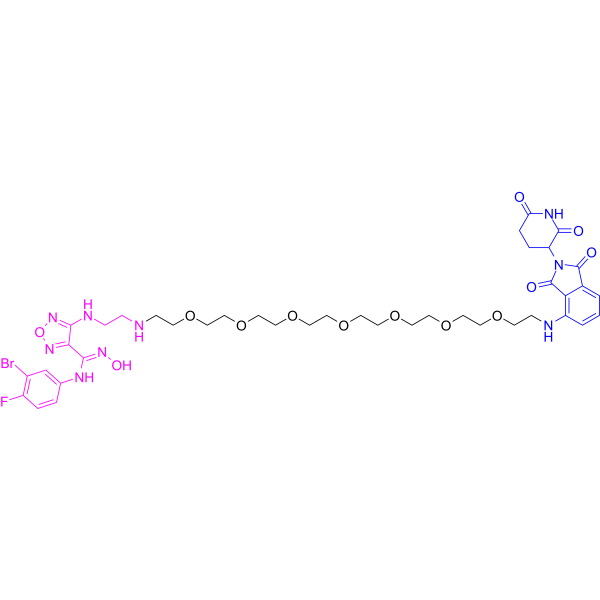
-
- HY-153358A
-
|
|
HDAC
|
Cancer
|
|
(S)-TNG260 is an isomer of TNG260 (HY-153358). TNG260 is a CoREST selective deacetylase (CoreDAC) inhibitor. TNG260 inhibits HDAC1 with 10-fold selectivity over HDAC3. TNG260 causes HDAC1 inhibition and reverses anti-PD1 resistance driven by STK11 deletion. TNG260 reduces intratumoral infiltration of neutrophils. TNG260 exhibits immune-mediated cell killing.
|
-
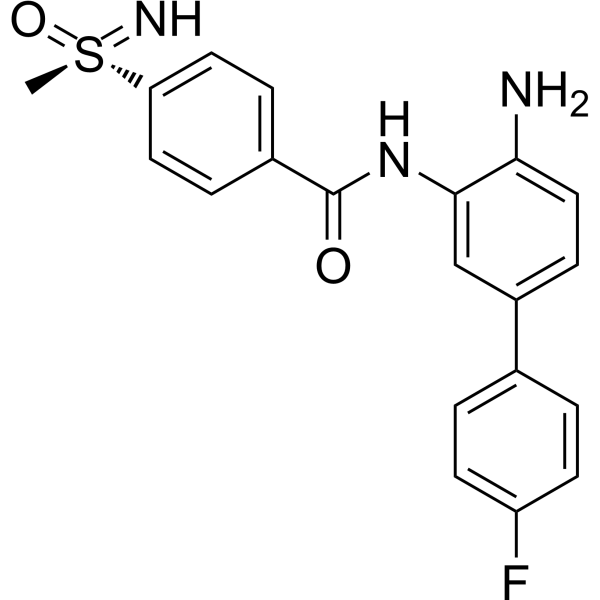
-
- HY-163028
-
|
|
Tim3
|
Cancer
|
|
ML-T7 is a potent Tim-3 inhibitor. ML-T7 blocks Tim-3 interactions with PtdSer and CEACAM1.
ML-T7 not only enhances the antitumor activity of adoptive transfer therapy with cytotoxic T lymphocytes (CTLs) and CAR T cells but also increases the effector function of T cell. ML-T7 promotes NK cells’ killing activity against tumor cells and DC antigen-presenting capacity. ML-T7 directly exerts antitumor efficacy in preclinical tumor models either alone or in combination with Nivolumab (HY-P9903A). ML-T7 can be used for tumor immunotherapy research .
|
-

-
- HY-100195
-
|
|
|
|
|
SAR-020106 is an ATP-competitive, potent, and selective CHK1 inhibitor with an IC50 of 13.3 nM for human CHK1. SAR-020106 shows excellent selectivity over CHK2. SAR-020106 significantly enhances the cell killing of Gemcitabine and SN38 by 3- to 29-fold in several colon tumor lines and in a p53-dependent fashion. SAR-020106 can enhance antitumor activity with selected anticancer agents .
|
-
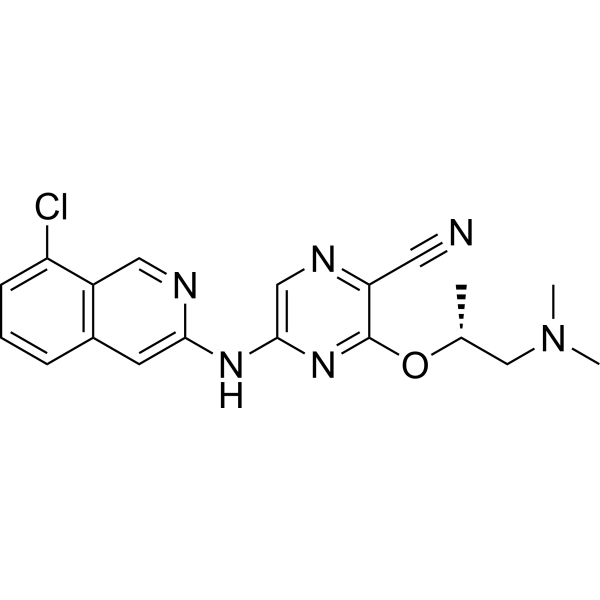
-
- HY-153360
-
|
|
Drug-Linker Conjugates for ADC
Topoisomerase
|
Cancer
|
|
MC-GGFG-AM-(10Me-11F-Camptothecin) is a linker-payload conjugate used to synthesize ZW251. ZW251 an antibody-drug conjugate (ADC) targeting human GPC3. ZW251 consists of a humanized IgG1 antibody conjugated to a novel camptothecin-based topoisomerase 1 inhibitor, ZD06519, via a linker. The linker is the maleimide anchor and a glycyl glycyl phenylalanyl glycine (GGFG)-aminomethyl (AM) cleavable linker. ZW251 has high affinity with human and cynomolgus monkey GPC3. ZW251 displays rapid internalization in GPC3-expressing HCC cell lines, and bystander-mediated killing of GPC3 negative cancer cells .
|
-

-
- HY-149493
-
|
|
PI3K
|
Inflammation/Immunology
Cancer
|
|
IHMT-PI3K-455 (Compound 15u) is a potent, selective, orally active PI3Kγ/δ dual inhibitor with IC50s of 7.1 nM and 0.57 nM for PI3Kγ and PI3Kδ, respectively. IHMT-PI3K-455 suppresses the AKT phosphorylation. IHMT-PI3K-455 inhibits tumor growth by recruiting and activating more CD8 + killing T cells.IHMT-PI3K-455 is used in cancer research .
|
-
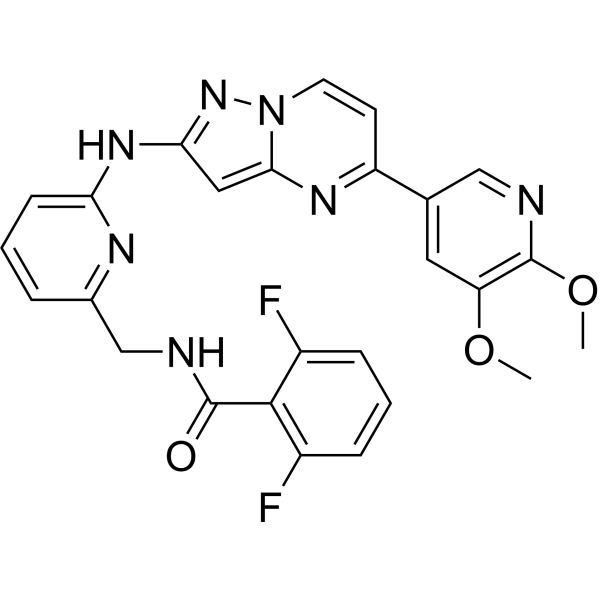
-
- HY-N6733
-
|
|
DNA/RNA Synthesis
HSV
Apoptosis
Antibiotic
Orthopoxvirus
|
Infection
Inflammation/Immunology
|
|
Aphidicolin is an inhibitor of DNA polymerase α and δ, prevents mitotic cell division by interfering DNA polymerase activity. Aphidicolin is an antibiotic produced by mold Cephalosporium aphidicola, inhibits cellular deoxyribonucleic acid synthesis and the growth of herpes simplex virus. Aphidicolin exhibits anti-orthopoxvirus activity and potentiates apoptosis induced by arabinosyl nucleosides in a human promyelocytic leukemia cell line .
|
-

-
-
HY-L179
-
|
|
41 compounds
|
|
Radiotherapy is a common treatment for various cancers, and more than 50% of cancer patients require radiotherapy during the disease treatment. With advances in radiation technology and a better understanding of tumor biology, the efficacy of radiation therapy has gradually improved, and more and more patients have benefited from it. However, even with the use of advanced radiotherapy techniques, there are still many malignant tumor cells with low sensitivity to radiation, leading to the radiation effect is not ideal. To solve this problem, radiosensitizers have received more and more attention. Radiosensitizer is a kind of drug that can enhance the radiosensitivity of tumor cells and improve the effect of radiotherapy. Radiation sensitizers act in a variety of ways, such as killing hypoxic cells, enhancing DNA damage, inhibiting DNA damage repair, and blocking cell cycle progression, making tumor cells more susceptible to radiation damage and death than surrounding normal cells.
MCE designs a unique collection of 41 compounds with definite reported radiosensitization. It can be used for drug combination research in anti-cancer treatment.
|
-
-
HY-L049
-
|
|
1315 compounds
|
|
Antibacterial agents are a group of materials that fight against pathogenic bacteria. Thus, by killing or reducing the metabolic activity of bacteria, their pathogenic effect in the biological environments will be minimized. The most widely used antibacterial agents exert their effects on bacterial cell wall synthesis, protein synthesis, DNA replication and metabolic pathways. However, resistance to antimicrobial agents has become a major source of morbidity and mortality worldwide. The main mechanisms of resistance are limiting uptake of a drug, modification of a drug target, inactivation of a drug, and active efflux of a drug. Therefore, it is an urgent need to develop new drugs targeted at resistant organisms.
MCE offers a unique collection of 1315 compounds with validated antibacterial activities. MCE antibacterial compound library is an effective tool for drug repurposing screening, combination screening and biological investigation.
|
| Cat. No. |
Product Name |
Type |
-
- HY-W145657
-
|
Cord Factor
|
Biochemical Assay Reagents
|
|
Trehalose 6,6'-dimycolate (Cord Factor) is trehalose 6,6'-dimycolate, a cell wall glycolipid of Mycobacterium tuberculosis, which can be used to simulate inflammation and granuloma induced by Mycobacterium tuberculosis (MTB) form. Trehalose 6,6′-dimycolate also protects Mycobacterium tuberculosis from macrophage-mediated killing, inhibits efficient antigen presentation, and reduces the development of protective T cell responses .
|
-
- HY-140696C
-
|
mPEG-Hydroxy (MW 20000); Polyethylene glycol monomethyl ether (MW 20000)
|
Drug Delivery
|
|
m-PEG-OH (MW 20000) can be used as a macroinitiator to participate in the synthesis of amphiphilic block copolymers. Nanoscale micelles can be prepared by using amphiphilic block copolymers to deliver active drugs. Paclitaxel (HY-B0015), a hydrophobic anticancer agent encapsulated in micelles, has stronger activity in killing cancer cells than free Paclitaxel. And it preferentially accumulates in tumor tissue with only limited distribution in healthy organs.
|
-
- HY-140696D
-
|
mPEG-Hydroxy (MW 10000); Polyethylene glycol monomethyl ether (MW 10000)
|
Drug Delivery
|
|
m-PEG-OH (MW 10000) can be used as a macroinitiator to participate in the synthesis of amphiphilic block copolymers. Amphiphilic block copolymers can be used to prepare nanoscale micelles to deliver active drugs. Paclitaxel (HY-B0015), a hydrophobic anticancer agent encapsulated in micelles, has stronger activity in killing cancer cells than free Paclitaxel. And it preferentially accumulates in tumor tissue with only limited distribution in healthy organs.
|
| Cat. No. |
Product Name |
Target |
Research Area |
-
- HY-P3305
-
|
|
Peptides
|
Others
|
|
NBD-LLLLpY is an enzymatically forming intranuclear peptide for selectively killing human induced pluripotent stem cells.
|
-
- HY-P5496
-
|
|
Peptides
|
Others
|
|
AAV2 Epitope is a biological active peptide. (This peptide is the capsid derived immunodominant adeno-associated virus 2 (AAV2), CD8 T cell epitope. Liver toxicity observed in a clinical trial of AAV2 delivered systemically to patients with hemophilia was ascribed to killing of vector-transduced hepatocytes by capsid-specific T-cells.)
|
| Cat. No. |
Product Name |
Target |
Research Area |
-
- HY-P99011
-
|
|
CD3
|
Cancer
|
|
Cibisatamab (CEA-TCB), a T cell bispecific antibody, binds Carcino-Embryonic Antigen (CEA) on cancer cells and CD3 on T cells. Cibisatamab (CEA-TCB) triggers T cell killing of cancer cell lines expressing moderate to high levels of CEA at the cell surface. Cibisatamab (CEA-TCB) can be used for colorectal cancer research .
|
-
- HY-P99949
-
|
OMP-313M32
|
Inhibitory Antibodies
|
Cancer
|
|
Etigilimab (OMP-313M32), a humanized IgG1 monoclonal antibody, blocks TIGIT interaction with PVR (CD155; poliovirus receptor) and inhibits downstream signalling with target cell killing .
|
-
- HY-P99601
-
|
BFCR 4350A; RG 6160; RO 7187797
|
CD3
|
Neurological Disease
Cancer
|
|
Cevostamab (BFCR4350A; RG6160; RO7187797) is a humanized IgG1-based BsAb that targets membrane-proximal extracellular domain of FcRH5 on multiple myeloma (MM) cells as well as CD3 on T cells. Moreover, Cevostamab facilitates efficient synapse formation, improves killing activity of T cells against MM tumor cells .
|
-
- HY-P99636
-
|
ABX-CBL
|
Inhibitory Antibodies
|
Inflammation/Immunology
|
|
Gavilimomab (ABX-CBL) is an IgM murine monoclonal antibody that recognizes CD147 on the cell surface and initiates cell killing through complement-mediated lysis. Gavilimomab can be used for the research of graft-versus-host disease (GVHD) .
|
-
- HY-P99521
-
|
XmAb14045
|
CD3
|
Cancer
|
|
Vibecotamab (XmAb14045) is a potent bispecific antibody against CD123 and CD3 that stimulates T cell-mediated targeted killing of CD123-expressing cells. Vibecotamab has antitumor activity and can be used in acute myeloid leukaemia studies .
|
-
- HY-P99024
-
|
RO7082859
|
CD20
|
Cancer
|
|
Glofitamab (RO7082859) is a T-cell-engaging bispecific antibody possessing a novel 2:1 structure with bivalency for CD20 on B cells and monovalency for CD3 on T cells. Glofitamab leads to T-cell activation, proliferation, and tumor cell killing upon binding to CD20 on malignant cells. Glofitamab induces durable complete remissions in relapsed or refractory B-Cell lymphoma .
|
-
- HY-P99058
-
|
IMAB362
|
Inhibitory Antibodies
|
Cancer
|
|
Zolbetuximab (IMAB362) is a monoclonal antibody targeting Claudin-18.2. Zolbetuximab mediates specific killing of Claudin-18.2-positive cells through immune effector mechanisms. Zolbetuximab can be used for the research of gastrointestinal adenocarcinomas and pancreatic tumors .
|
-
- HY-P99394
-
|
JNJ-64407564
|
CD3
|
Cancer
|
|
Talquetamab (JNJ-64407564) is a humanized bispecific antibody that binds to GPRC5D (member of G protein-coupled receptor family C5 group D) and CD3 to induce T cell-mediated killing of GPRC5D-expressing MM cells through T cell recruitment and activation. Talquetamab (JNJ-64407564) has antitumor activity .
|
-
- HY-P99622
-
|
IMC-20D7S
|
Tyrosinase
|
Cancer
|
|
Flanvotumab (IMC-20D7S) is a human monoclonal antibody targeting to tyrosinase-related protein (TYRP1), specifically expressed in melanocytes and melanoma cells. Flanvotumab acts function via natural killing-mediated antibody-dependent cell-mediated cytotoxicity (ADCC). Flanvotumab has potent anti-tumor activity and good tolerance .
|
-
- HY-P99833
-
|
CK-301; TG-1501
|
PD-1/PD-L1
|
Cancer
|
|
Cosibelimab (CK-301; TG-1501) is a high-affinity, fully human PD-L1-blocking monoclonal antibody that binds PD-L1 and blocks its interaction with PD-1. Cosibelimab has a functional Fc domain and is capable of inducing ADCC and complement-dependent cytotoxicity (CDC)-mediated killing of PD-L1 + cell lines, including lymphoma cells .
|
-
- HY-P9976A
-
|
|
CD38
|
Cancer
|
|
Isatuximab (anti-CD38) is a monoclonal antibody targeting the transmembrane receptor and extracellular enzyme CD38.Isatuximab induces tumor cell killing via fragment crystallizable (Fc)-dependent or Fc-independent mechanisms, including antibody-dependent cellular cytotoxicity (ADCC), antibody-dependent cellular phagocytosis (ADCP), and complement-dependent cytotoxicity (CDC) .
|
| Cat. No. |
Product Name |
Category |
Target |
Chemical Structure |
Your information is safe with us. * Required Fields.
Inquiry Information
- Product Name:
- Cat. No.:
- Quantity:
- MCE Japan Authorized Agent:



















































